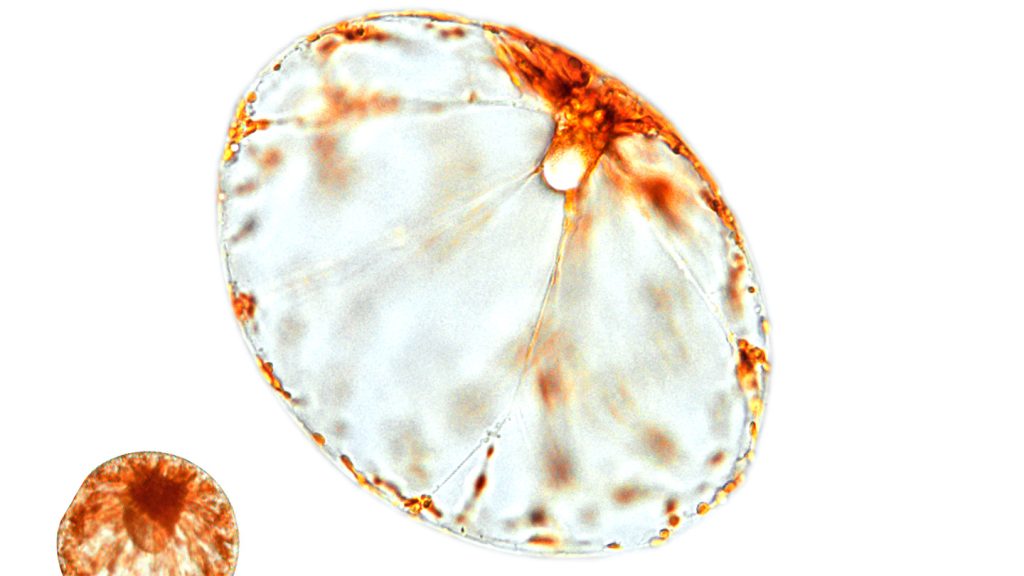Researchers from Stanford University have discovered that one species of phytoplankton, Pyrocystis noctiluca, undergoes a unique process to float upward from deep in the sea towards the surface. By swelling up to six times its original size, the phytoplankton reduces its density and is able to rise like a helium balloon. This innovative method of buoyancy was observed by the team in water samples collected off the coast of Hawaii, where the phytoplankton’s behavior was closely monitored. The journey from 125 meters deep to about 50 meters can take days for these organisms, unlike other zooplankton that make the trek daily.
Using special microscopes in the lab, the researchers were able to recreate the movement of the phytoplankton on a “hydrodynamic treadmill” to study its behavior. They found that P. noctiluca swells at the beginning of its life cycle, becoming less dense and floating up the water column. As the cell completes its seven-day life cycle and begins to divide into two daughter cells, each newborn cell inflates by filling up with seawater, expanding to six times its original size in around 10 minutes. The researchers believe that aquaporin proteins in the cell filter out dense salt from the incoming seawater, making it less dense than the surrounding seawater.
The team also discovered that calcium in the seawater may play a role in triggering and facilitating the transformation that allows the phytoplankton to inflate and rise. This inflation not only helps the phytoplankton to move upwards towards the surface but also has other significant impacts on its life. Bigger cells have lower predation risk, as there are fewer organisms that can feed on them. Additionally, the larger surface area of the inflated cells allows for more efficient nutrient uptake and photosynthesis, enabling the phytoplankton to thrive in its environment.
According to oceanographer Andre Visser from the Technical University of Denmark, this innovative method of buoyancy exhibited by P. noctiluca is unique and provides new insights into how these organisms manage to stay near the surface despite their inherent density. The researchers’ findings shed light on the complexities of phytoplankton behavior and the adaptations they have developed to survive and thrive in the marine environment. By studying the mechanisms involved in the swelling and inflation process of these phytoplankton cells, scientists can gain a better understanding of the biology and ecology of these vital organisms in the ocean ecosystem.
The discovery of this unique method of rising to the surface in phytoplankton highlights the incredible diversity of strategies that organisms have developed to overcome challenges in their environment. Understanding how these microscopic organisms navigate the depths of the ocean and regulate their buoyancy can provide valuable insights into the broader functioning of marine ecosystems and the interconnectedness of life in the sea. By unraveling the mysteries of phytoplankton behavior, researchers can contribute to our knowledge of the complex and dynamic processes that govern life in the ocean and ultimately, the health of our planet. The study of P. noctiluca’s inflation process opens up new avenues for research into the biology and ecology of these tiny but important creatures that play a crucial role in shaping the marine environment.















